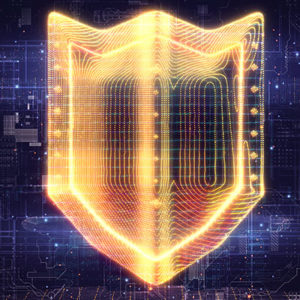The Basics of a Secure Network
 Unfortunately, some businesses have had to learn the hard way in order to pay attention to their business’ cybersecurity efforts. These cautionary tales aren’t lost on many business owners, but in some cases, they are still ignored. We hear the excuses all the time; “Nobody wants my data” or “My business is too small- what interest would the hackers have in me?” IN actuality, every business is at risk, and the smaller once maybe even more so, as they often don’t have the resources to put into cyber security.
Unfortunately, some businesses have had to learn the hard way in order to pay attention to their business’ cybersecurity efforts. These cautionary tales aren’t lost on many business owners, but in some cases, they are still ignored. We hear the excuses all the time; “Nobody wants my data” or “My business is too small- what interest would the hackers have in me?” IN actuality, every business is at risk, and the smaller once maybe even more so, as they often don’t have the resources to put into cyber security.
Today, we thought we would go through some basic things that any organization needs to know to keep their business safe.
Reliably Secure Wireless
These days, a lot of business is done on a wireless network. When a business sets up its Wi-Fi, they can make some pretty serious mistakes that can cause real problems if left uncorrected. Best practices dictate that any business that sets up a wireless network should change their router credentials regularly, ensure that any firewalls have been updated, and create a guest network that is separate from the main Wi-Fi network that can be accessed by employees.
Up-To-Date Antivirus
Antivirus (or “endpoint protection”) tools are one of the most important cybersecurity solutions an organization can have, but only if they are regularly updated with threat definitions that represent the attacks a network would have to confront. The entire point of antivirus (and other anti-malware tools) is to identify and quarantine potentially malicious code, so if it doesn’t have the latest definitions to accomplish this, it will inevitably let malicious code onto the network; a real problem for any business.
And you can’t just stop at updated virus definitions. Next generation endpoint protection solutions offer anti-ransomware, and rather than searching only for known viruses, look instead at actions and behaviors. By definition, a “zero-day” virus has never been seen before, and thereby won’t be defined by an anti-virus solution. If you’re using a high quality solution like those from Sophos, you’ll rest assured knowing that you’ll be alerted (and viruses will be blocked) the moment an questionable behavior is seen in your network.
Keeping Firewalls Current
The same goes for firewalls. Security-minded companies set up multiple firewalls between elements of their computing infrastructure. If the firewalls’ threat definitions aren’t up-to-date, they won’t be very good at catching the malicious code that comes in and out of parts of a network.
Utilizing Password Management
Password management promotes better password practices. It does so by encrypting the numerous passwords that any user has to have in the course of their work. This means a user only has to remember one password instead of dozens, and removes excuses to not create complex passwords for every account. The more complex the passwords are, the more secure the accounts associated with them are.
Multi-Factor or Two-Factor Authentication
Two-factor authentication or multi-factor authentication (2FA or MFA, respectively) is a useful security addition to any password-fueled account. Instead of gaining access to an account or profile after they enter a username and password, the user is asked to authenticate their password using a code or other method. This can be something as simple as a text message sent to a user’s email all the way to a biometric scan of a user’s fingerprint or iris. The idea is to add another layer of security to password-centric accounts, as they are the ones that are most vulnerable to attack.
At Ashton Solutions, we work with Cleveland-area businesses every day to improve their business’ security processes and their overall efficiency. To talk to one of our consultants about your business’ cybersecurity, give us a call today at 216 397-4080.






